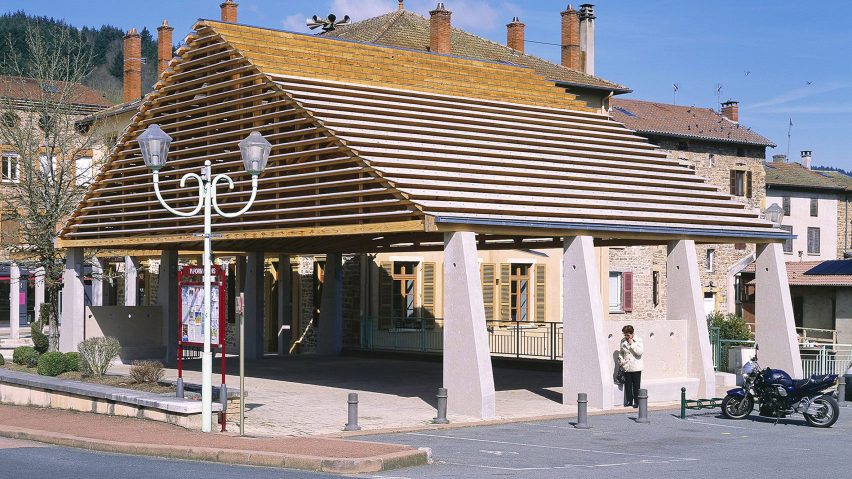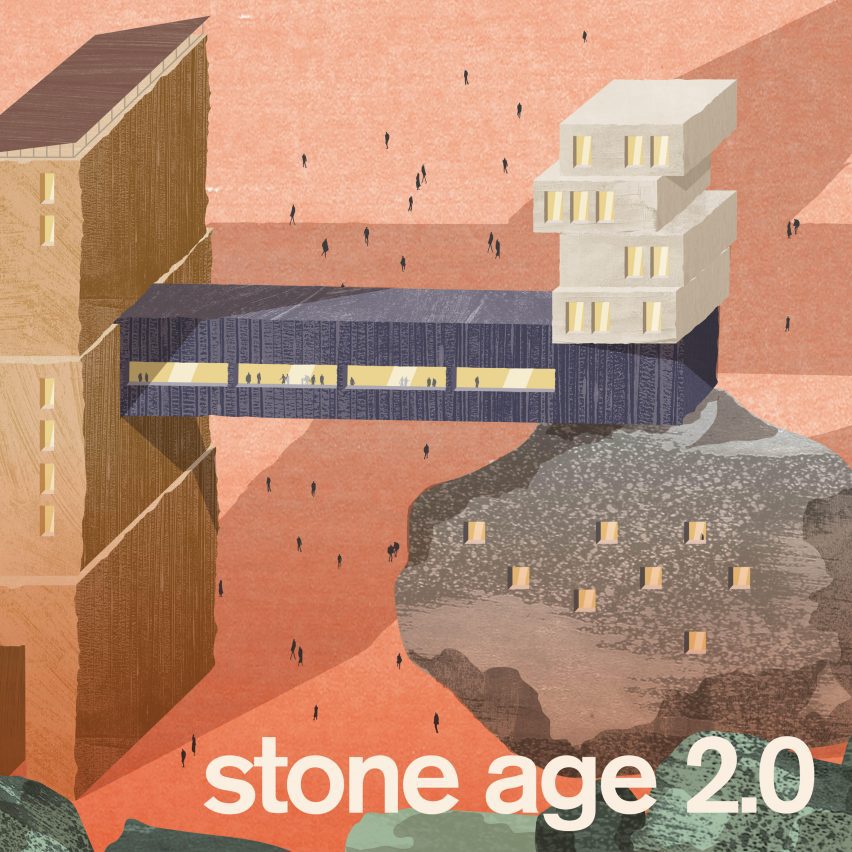
"We are proposing a simple switch from concrete to stone" says The Stone Collective
The Stone Collective is aiming to weaken concrete and steel's hold on the architecture industry. As part of our Stone Age 2.0 series, the newly formed group explains its ambition.
"There is a lack of exposure to stone projects by contemporary architects everywhere," said spokesperson Pierre Bidaud, member of The Stone Collective.
"It's a bit political," he told Dezeen. "The steel and concrete industries are dominating because they are well organised and lobbying. The Stone Collective's ambition is to change that."

Launched in January, The Stone Collective is a group of stone professionals "pioneering stone as the 21st-century's low carbon, load-bearing material".
Its six founding members are specialist stone companies, including Albion Stone, Hutton Stone and The Stonemasonry Company, which is led by Bidaud. The others are Lundhs Real Stone, Paye Stonework and Polycor Inc.
"Stone has exactly the same potential as wood"
Stone is strong, plentiful and fireproof and, as a natural material and carbon store, its embodied energy – emissions associated with bringing buildings into being – is inherently low.
Because of this, the collective wants to reposition it as a viable alternative to concrete and steel, which are energy-intensive, man-made materials that currently dominate the industry.
There is growing interest in natural, low-carbon materials, such as stone, due to the industry's vast carbon footprint, which reportedly accounts for 39 per cent of global carbon emissions. This has led to a surge in the popularity of timber in the past two decades – a movement that The Stone Collective believe can be emulated with stone.
Through its work, the group is particularly motivated to showcase how stone can be used in place of steel and concrete for small-scale projects such as housing.
"It's come to light that there is an urgent need to find sustainable and scalable alternatives to concrete and steel in building housing," Bidaud explained.
"Stone has exactly the same potential as wood and cross-laminated timber, except that it's even better than wood at recycling," said Bidaud.
Knowledge and understanding "holding the industry back"
An added benefit of stone, Bidaud said, is that it is that it can be used in place of concrete.
"What we are proposing is a simple switch from concrete to stone," said Bidaud. "Stone and concrete behave the same in compression and in many other way."
"Modern technology and resources are making this possible," he continued. "People always ask about the supply chain and the volume of stone – it's all there."
While the group believes there is enough stone available to make this transition, it said a lack of awareness is a barrier to achieving it.
"Knowledge, understanding and a lack of relevant code are holding the industry back," Bidaud said.
"I was talking to some architects and engineers recently who said they were only taught about concrete and steel at university."
"We want the stone movement to grow"
To reverse this, The Stone Collective's plans for the year include attendance at Footprint – a UK property event – where it will lead a series of talks spotlighting structural stone. It is also writing a book and intending to collaborate with schools of architecture.
Meanwhile, the group is opening its doors to other stone champions to stand with them and support the initiative.
"In theory, anyone that wants to use stone in its full capacity can join the collective," said Bidaud. "Architects, engineers, academics, researchers, sustainable leads, we want the stone movement to grow."
Another collective calling on architects to embrace stone as a structural material is the Natural Materials Group of the Architects Climate Action Network. One of its coordinators, Aurore Baulier, spoke to Dezeen as part of Stone Age 2.0 series and called on architects to embrace the material.
"Swapping traditional materials – or materials that are traditional now – for stone can be done," she told Dezeen.
Baulier is one of several stone experts that Dezeen has spoke to for its Stone Age 2.0 series. While the majority are optimistic about the use of stone, architect Natalia Petkova is more cautious.
"I would caution against claims of stone being a revolutionary sustainable material," she told Dezeen. "The virtue of solid stone construction is case-specific and depends on where the stone comes from and how it is employed."

Stone Age 2.0
This article is part of Dezeen's Stone Age 2.0 series, which explores the potential of stone to be a viable, low-carbon, modern structural material.